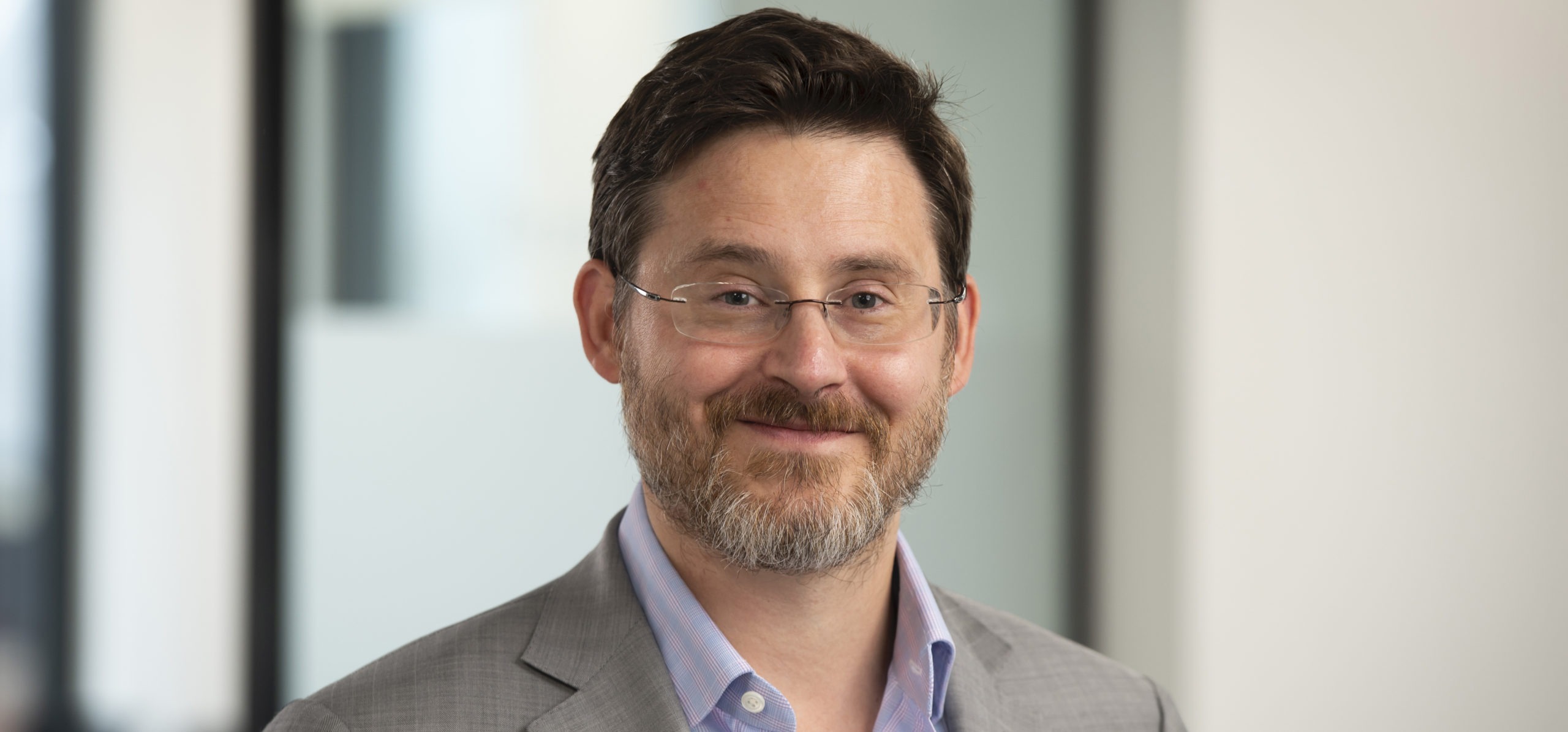
With £49bn in assets under management Border to Coast is one of the biggest LGPS pools. Room151 caught up with chief investment officer Daniel Booth to talk bonds, private markets, economic cycles and coronavirus.
Room151: What are your aims at Border to Coast?
Daniel Booth (DB): I think there are three key strategic objectives that we’re trying to achieve with our partner funds. The first is delivering value for money and there we have three underlying themes: firstly, delivering cheaper costs and saving money by being more efficient and using our economies of scale; secondly, generating better investment performance over the long term, because that’s ultimately going to help to keep pensions affordable, and; thirdly, better risk control – making sure that we generate better performance but with good, tight risk control.
Get Room151’s FREE LGPS Quarterly Briefing
The second objective is to ensure that we have breadth and depth of investment offerings to satisfy partner funds’ asset allocation requirements.
And the third is providing our partners with a greater voice. Any single local pension fund can’t have the impact that we can have as a collective, with 12 plans and £50bn of assets under management. With our combined clout, we get noticed by the industry. We have a much bigger voice across a range of issues, including ESG and RI.
Keep in touch – register for Room151 treasury and finance meetings ONLINE
Room151: What’s the most
attractive investment at the moment?
DB: Bond yields, obviously, are very low historically. You’ve got
negative yields on inflation linkers and low yields on nominals. You’ve got to
think that over a very long period of time you’re really dependent upon
continued capital appreciation for those assets to perform, because you’re not
getting much income.
Whereas you look at public equities, they have higher valuations in the US, but outside the US, valuations are a bit more normal and reasonable. If you look at the UK market, we’re seeing a dividend yield of four to five percent on the market as a whole. But even if you assume no price appreciation in 10 years, and just lived off the dividends, that’s actually probably not a bad return over other cash rates, which are forecast to be very low over the next 10 years.
Get updates for our LGPS Investment Forum – November 9th, 2020
The probability for performance in equities is higher. Just as a result of the starting valuations being more attractive than bonds, on a relative value basis, all be it that they’re a little expensive on a historical basis. But most of that is really driven by the US.
Room151: What are you seeing in the private markets space?
DB: In private markets you’re taking liquidity risk so you should be getting an illiquidity premium over time. The big question at the minute is: are you getting that premium at this point in the markets?
My big concern at the minute would be that consultants are pushing investors into a lot of illiquid assets.
Daniel Booth
I think that’s debatable. If you look at private equity over the last 10 years, and you clean the data, it probably hasn’t outperformed public markets. But there are certain strategies that have performed really well within that. Venture capital has done very well over the last 10 years. There are opportunities, you just have to be a bit more selective.
My big concern at the minute would be that consultants are pushing investors into a lot of illiquid assets. And unless you’ve got an implementation edge, in alternative assets, it can be expensive. You need to make sure you’re really getting value for your money.
Room151: How about real estate?
DB: In real estate it’s the other way around. Public REITS in the UK are trading at much bigger discounts than private transactions of which there are few. So, value in the public market looks pretty good.
In infrastructure you’ve got some asset classes trading cheaper in the public market, some in the private market; the asset class as a whole is relatively expensive. But then, when you compare that to bond yields, you could probably justify some of that valuation.
I think there are opportunities but you probably need to look a little bit harder to find them and not go where everybody else is going.
There’s a huge amount of liquidity in the system at the moment. You need to be ahead of the liquidity, not behind it. If you’re behind the liquidity, you’re getting low yields, and maybe not getting compensated for the risks.
If you think about infrastructure investing, most of the population growth is coming in the emerging markets. Those are the areas where you’re going to have an expanding need for infrastructure.
Daniel Booth
Room151: How do you get
ahead of the liquidity?
DB: By doing things that other people are a little bit uncomfortable
with; by really understanding the risks that you’re taking. Just because
something is in the developed market doesn’t mean that it’s risk free. And just
because something’s in the emerging markets doesn’t mean, necessarily, that
it’s an inherently riskier investment.
If you think about infrastructure investing, most of the population growth is coming in the emerging markets. Those are the areas where you’re going to have an expanding need for infrastructure. And you’ve probably still got the huge demand for capital. But you’ve also got less supply chasing opportunities. As long as you understand the risks of operating in those countries, then the rewards can justify the risk.
Room151: What do the bond markets tell us about the global economy?
DB: They tell us that the market is pricing in the next five to 10 years to be similar to the last 10 years.
Coming out of the global financial crisis and the pricing of the subsequent bull market, you had a steep yield curve. What the pricing was telling us after the crisis was that rates were going to be low for the next year, or a couple of years. But then we’re going to start to normalise. The market basically mis-priced that and got it wrong for about eight years. Then over the last couple of years prices have reacted appropriately, with a very flat yield curve telling us that there needs to be easy monetary policy for a long period of time.
The question is, will the next 10 years be similar to what we had in the previous decade? The answer, inevitably, is no, it’s going to be different. The question is, different how?
What the market is pricing in at the minute is low growth, low inflation and—based upon high debt levels—low aggregate demand, because the private sector has borrowed too much money, and has low levels of productivity.
You’ve got to be a little bit careful of an increase in inflation, given some of the stimulative policies.
Daniel Booth
What we’ve got is quite a different set of circumstances evolving, where the central banks have restarted quantitative easing and the commercial banks are no longer reducing their multipliers. There’s no offsetting force for that. Expansionary fiscal policy is now accepted as the way forward. And we’ve got trade tensions, and so forth, which could cause some friction on flows of capital, flows of product and put incremental cost on prices.
We’ve got some new scenarios working through the system: Very easy monetary policy, potentially combined with easier fiscal policy, with some trade frictions added on top.
You’ve got to be a little bit careful of an increase in inflation, given some of the stimulative policies. Maybe not in the near term, but over the longer term for long-term asset holders, that’s something to be aware of.
Room151: Looking ahead,
what do you see as the big risks and the big investment opportunities?
DB: The biggest risks are probably valuation risk and economic cycle
risk.
If we look at valuation risk, most asset classes, but not all, are quite highly valued. Generally, analysts are quite bad at turning points in cycles, and when you do get a turning point, obviously earnings are affected. So, if you’re slightly rich in an asset class and all of a sudden the asset’s earnings go down, then the valuations can look quite expensive pretty quickly.
On the equity market as a whole, valuations don’t look extreme outside of the US. But if there is a turn in earnings, that can change the picture quite quickly.
That links to my second point, which is the economic and credit cycle. The economic cycle is obviously quite elongated. Cycles typically end by tighter monetary policy. In this expansion, we’ve seen a very slow recovery with very accommodative monetary policy. We haven’t had as many excesses build up and you haven’t had such offsetting central bank action, we’ve actually had quite supportive central bank action.
I think the central banks are aware and quite sensitive that they don’t want to tighten too quickly. We saw the US tighten in 2018, which caused the markets to tumble, and then quickly reverse course in 2019, which caused the market to stabilise.
There’s some valuation risk, there’s some cycle risk and, thirdly, there’s just lower expected return on asset classes.
Daniel Booth
The central banks are working with the current markets. But, basically, expected returns and assets are going to be low because cash rates are low. And assets generally give you a return above cash rates.
Although risky asset valuations look slightly expensive, but not extremely expensive, asset returns will probably be low over a long period of time because your cash rates are low and assets are priced off cash. There’s some valuation risk, there’s some cycle risk and, thirdly, there’s just lower expected return on asset classes.
Room151: Are you keeping an
eye on the effects of Coronavirus?
DB: That is a live and evolving risk. We do think it has an impact on
short-term GDP. We’re more interested in the medium-term impact. The medium-term
impact is probably a little bit difficult to quantify.
Obviously, there’s a lot of travel restrictions and reductions in services and manufacturing and so forth, especially in affected countries. I think the uncertainty is just how long that goes on for.
We’re not in a position where we’re speculating, but we are keeping an eye on it as a potentially evolving risk factor. It’s the medium-term impact that would be more concerned with.
Daniel Booth is chief investment officer at Border to Coast.











